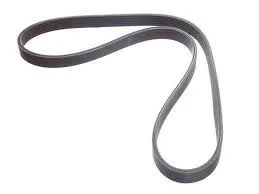- Arabic
- French
- Russian
- Spanish
- Portuguese
- Turkish
- Armenian
- English
- Albanian
- Amharic
- Azerbaijani
- Basque
- Belarusian
- Bengali
- Bosnian
- Bulgarian
- Catalan
- Cebuano
- Corsican
- Croatian
- Czech
- Danish
- Dutch
- Afrikaans
- Esperanto
- Estonian
- Finnish
- Frisian
- Galician
- Georgian
- German
- Greek
- Gujarati
- Haitian Creole
- hausa
- hawaiian
- Hebrew
- Hindi
- Miao
- Hungarian
- Icelandic
- igbo
- Indonesian
- irish
- Italian
- Japanese
- Javanese
- Kannada
- kazakh
- Khmer
- Rwandese
- Korean
- Kurdish
- Kyrgyz
- Lao
- Latin
- Latvian
- Lithuanian
- Luxembourgish
- Macedonian
- Malgashi
- Malay
- Malayalam
- Maltese
- Maori
- Marathi
- Mongolian
- Myanmar
- Nepali
- Norwegian
- Norwegian
- Occitan
- Pashto
- Persian
- Polish
- Punjabi
- Romanian
- Samoan
- Scottish Gaelic
- Serbian
- Sesotho
- Shona
- Sindhi
- Sinhala
- Slovak
- Slovenian
- Somali
- Sundanese
- Swahili
- Swedish
- Tagalog
- Tajik
- Tamil
- Tatar
- Telugu
- Thai
- Turkmen
- Ukrainian
- Urdu
- Uighur
- Uzbek
- Vietnamese
- Welsh
- Bantu
- Yiddish
- Yoruba
- Zulu
Aug . 06, 2024 13:03 Back to list
Exploring the Features and Benefits of the 12PK Fan Belt for Optimal Performance
Understanding the Importance of the 12PK Fan Belt
The fan belt, commonly referred to as a serpentine belt or accessory belt, plays a crucial role in the operation of many vehicles. Specifically, the 12PK fan belt is recognized for its versatility and performance, being suitable for various automobile applications. Understanding its construction, function, and maintenance is vital for vehicle owners and automotive enthusiasts alike.
What is a 12PK Fan Belt?
The term 12PK refers to the specifications of the belt itself. The 12 typically indicates the number of ribs or grooves along the belt, while PK denotes the style of the belt. These belts are primarily made from durable rubber compounds that resist wear and provide flexibility. The design with multiple grooves allows for improved grip on pulleys and efficient power transfer from the engine to different components.
Functionality of the Fan Belt
The primary function of the fan belt is to drive multiple peripheral devices in an engine, which may include the alternator, power steering pump, air conditioning compressor, and, of course, the cooling fan. As the crankshaft turns, it spins the fan belt, which in turn powers these essential components. A well-functioning fan belt ensures that other systems in the vehicle operate smoothly, contributing to overall vehicle reliability and efficiency.
Signs of Wear and Tear
Like any other component of a vehicle, the 12PK fan belt will undergo wear over time. Common indicators of a failing belt include squeaking or squealing noises, especially during startup or when the engine is under strain. Visible signs of cracking, fraying, or glazing on the surface of the belt are also strong indicators that it may need to be replaced. Regular inspection of the fan belt is important; most mechanics recommend checking it at every oil change.
fan belt 12pk

Maintenance Tips
To extend the lifespan of your 12PK fan belt, proper maintenance is key. Here are a few practical tips
1. Regular Inspections As previously mentioned, routinely check the belt for signs of wear. If you’re unsure how to inspect it, having a professional mechanic take a look can save you from potential breakdowns.
2. Proper Tension Ensure that the fan belt is correctly tensioned. A belt that is too tight can lead to premature wear on both the belt and the pulleys, while a loose belt may slip and fail to drive the accessories effectively.
3. Keep it Clean Dirt and debris can accumulate on the belt and pulleys, which may lead to slippage. Keeping the area around the belt clean can help maintain its functionality.
4. Replacement Intervals It's advisable to replace the fan belt as part of a routine maintenance schedule, even if it appears to be in good condition. Typically, belts can last anywhere from 50,000 to 100,000 miles, but this may vary based on driving conditions and the manufacturer's recommendations.
Conclusion
The 12PK fan belt is an essential component of many vehicles, playing a pivotal role in the overall function of the engine and its peripheral accessories. Understanding its operation, recognizing signs of wear, and adhering to a regular maintenance schedule can ensure that your vehicle runs smoothly and efficiently. By prioritizing the care of your fan belt, you can avoid unexpected breakdowns and maintain the longevity of your vehicle's performance. Whether you are a seasoned mechanic or a casual driver, having knowledge about your vehicle's components is important for making informed decisions about maintenance and repairs.
-
Reliable Diesel Engine Belts & Tensioners for Optimal Performance
NewsAug.07,2025
-
23100-KVB-901 Drive Belt for Honda VARIO | OEM Performance
NewsAug.06,2025
-
Variable Belt Drive AI Optimized for Efficiency
NewsAug.05,2025
-
High-Quality Tensioner Belt Pulley - Durable & Efficient
NewsAug.03,2025
-
Premium Timing Belt Factory | AI-Optimized Solutions
NewsAug.02,2025
-
Heat Joining Drive Belt | High-Durability Fusion Solution
NewsJul.31,2025

